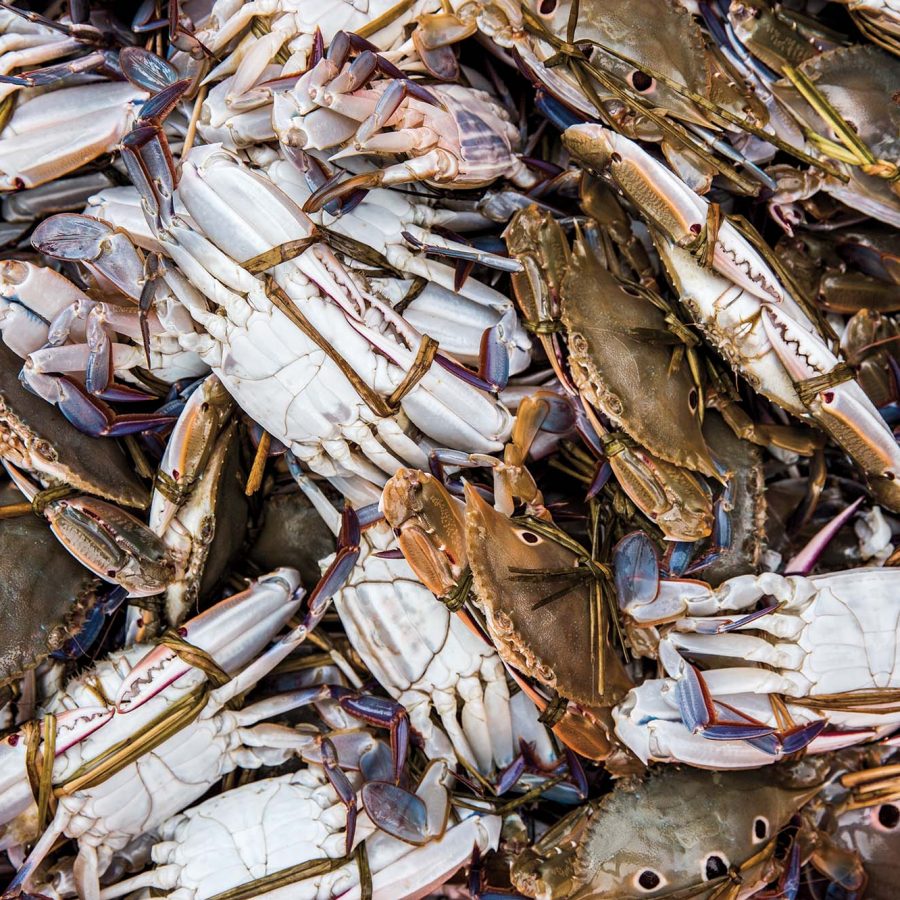Nothing says "Cantonese food" to me more than a whole steamed fish, dressed in little more than soy sauce, ginger and spring onion.
Growing up, we had steamed fish almost every night of the week. On a regular day, it might have been a yellowfin seabream or a golden threadfin; a good day meant there were wild yellow croakers at the market. If it were a special occasion – say, the eve of the Lunar New Year, or Mid-Autumn festival – and the extended family were around, we’d make sure we had dried seafood, like abalone, as well as a large, fresh fish, like grouper.

Credit: Callaghan Walsh
I would attack the grouper’s head first, easing out the cheeks (rated among Chinese as the most tender and delicious part of the fish) and offer them to my cousins. This outwardly gracious move was to hide the fact that I wanted another part of the fish head, the tender strip of muscle on the crown, and was afraid they might get to it first. Cantonese children are taught that the fish’s head, rather than the fillet, is where its treasures lie, and can work their chopsticks around the skull’s cavities like a pianist’s fingers on a baby grand’s keys.
Most of the fresh fish we had at home, and in Chinese restaurants, was local and a mixture of farmed and wild. This was the way Hong Kongers ate for a century or more. After all, we’re surrounded by sea, and before Hong Kong became a city it was merely a chain of fishing villages.
In the 1840s, the British began to arrive on our shores, bringing Western eating habits and ingredients like butter and wheat flour with them. In those early days, the Chinese and British led mostly separate lives, but in the early menus of exclusive clubs and restaurants that expats frequented, locally caught seafood, especially lobster, was listed alongside imported fish familiar to Europeans, such as turbot and Dover sole.

Credit: Callaghan Walsh
As important as fishing is to Hong Kongers, it’s a tough life, and many who had spent their lives at sea eventually moved to shore, into jobs in factories and offices. Incomes rose and the demand for seafood only rose with it. Around the 1960s, savvy eaters began to head to areas like Sai Kung, Aberdeen and Lei Yue Mun, where fishermen would come to shore, buy the catch of the day and have a small local eatery or hawker cook up a feast. By the 1980s, these had become fully-fledged restaurants, filled with businesspeople eager to please visiting clients.
A Cantonese-style feast isn’t the only way seafood fiends get their fill anymore. A seafood market has just opened on Wan Chai Pier, but don’t expect a clam and black bean stir-fry. This gourmet marketplace is operated by Yamataka, the largest wholesaler from Tokyo’s Tsukiji fish market; punters head here for the likes of Hokkaido sea urchin and tuna from Nagasaki.

Credit: Callaghan Walsh

Credit: Callaghan Walsh
Like Hong Kong, fishing is a big part of Japan’s history, but unlike in Hong Kong it’s still a viable industry. Our enthusiasm for seafood has depleted the fish stocks in our waters and almost rendered Hong Kong’s fishing industry obsolete. According to the World Wildlife Fund for Nature, seafood consumption per person in the city ranks the seventh highest in the world; to feed that insatiable hunger, we now rely on seafood imports from over 170 territories.
But the tide might be starting to turn. New laws on over-fishing are starting to help rebuild underwater ecosystems. Like they say in the inspirational quote business: if you love something, let it go.
More inspiration
Hong Kong travel information
- China – the Chinese Mainland, Hong Kong SAR, Macao SAR and Taiwan Region
- Hong Kong SAR - English
- Chinese Mainland (China) - English
- Taiwan, China - English
- 香港特別行政區 - 繁體中文
- 中国內地 - 简体中文
- 中國台灣 - 繁體中文
- Africa
- South Africa - English
- Asia
- Bangladesh - English
- Korea - English
- Singapore - English
- Cambodia - English
- 한국 - 한국어
- Sri Lanka - English
- India - English
- Malaysia - English
- Thailand - English
- Indonesia - English
- Maldives - English
- ประเทศไทย - ภาษาไทย
- Indonesia - Bahasa Indonesia
- Myanmar - English
- Vietnam - English
- Japan - English
- Nepal - English
- Việt Nam - tiếng Việt
- 日本 - 日本語
- Philippines - English
- Australasia
- Australia - English
- New Zealand - English
- Europe
- Belgium - English
- France - Français
- Россия - Русский
- Denmark - English
- Ireland - English
- Schweiz - Deutsch
- Deutschland - Deutsch
- Italia - Italiano
- United Kingdom - English
- España - Español
- Nederland - Nederlands
- Middle East
- Bahrain - English
- Saudi Arabia - English
- United Arab Emirates and Qatar - English
- Israel - English
